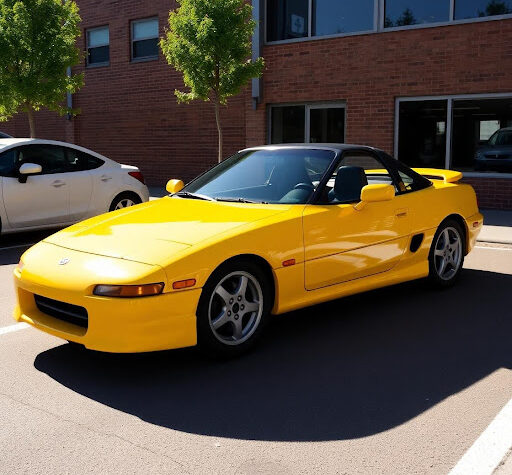
According to the developers, Neom will be the home and workplace to more than a million residents from around the world.
Global automotive markets are at a critical crossroads that will affect all manufacturers, according to the findings of a study by Arthur D. Little (ADL).
“The Future of Automotive Mobility” presents a markedly different mobility landscape in the three years since the 2018 Global Automotive Mobility Study, which found a “business as usual” industry only just taking its first steps towards electric powertrains. There has been a dramatic change in both demand for cars and how ownership of them is perceived.
While the Covid-19 pandemic has highlighted the protection and independence that a private car offers, a significant number of people are contemplating giving them up for environmental reasons. The auto industry’s 2% compound annual growth rate for the current decade is much less than ADL’s last survey predicted.
The study also shows that the move away from petrol and diesel-fueled vehicles is accelerating. Asked about their next vehicle, 29% of survey respondents favored a hybrid product, while 12% were considering the move to pure electric.

Automotive Industries (AI) interviewed Dr. Klaus Schmitz and Wolf-Dieter Hoppe, Partners in ADL’s Automotive and Manufacturing Practice.
AI: Are the environmental considerations a key factor for overall demand for vehicles?
Hoppe: You get contradicting indications. We have seen the premium which customers are willing to spend on an electric car decrease over the years. Our take is that customers would prefer a clean-driving vehicle, and are willing to sacrifice some comfort to do so.
AI: Is charging infrastructure still an issue?
Hoppe: Charging infrastructure is not going to be a problem in two years in the major markets. In addition to rollout, the demand for charging infrastructure decreases as the battery range increases. The demand is shifting to high-performance charging, so you can expect that infrastructure is going to be an ongoing topic for the next few years.
Schmitz: You also need to distinguish between private and public charging. Globally, EV drivers usually charge their vehicle 80% of the time privately, and only use public infrastructure
20% of the time. So, the public infrastructure is actually only relevant for 20% of the charging instances. This is one of the reasons why most EV drivers
are already happy with the existing charging network.
AI: Is China a “special market” for electrification and autonomous driving?
| 56 TO READ THE FULL VERSION OF STORIES GO TO w w w. a i – o n l i n e . c o m |
Hoppe: China, in general, is a very special market. The readiness to adopt autonomous driving is much higher than elsewhere, and the concerns about data protection are lower. When it comes to electric vehicle adoption, the regulative perspective of the market makes it quite different to the rest of the world. When it comes to the combination of autonomous and electric technology, such as mobility on demand services, China is likely to be one of the earlier markets to adopt such schemes in large scale.
AI: Does the automotive industry need to develop a better understanding of the modern driver’s priorities?
Schmitz: I would definitely say “yes,” because there is a big gap between the current strategies and the product portfolios in the market and the underlying triggers for the customers.
Let me explain. We asked drivers worldwide what they thought the next vehicle should be in terms of drivetrain. What we saw was a very large number of customers asking for electrified vehicles. Fully electric for around 11.5%, with a third choosing a hybrid vehicle. This is by far more than the global market supply of these respective powertrains. Our conclusion is that there is a big unsatisfied customer demand.
AI: How do you help the industry to respond to these shifts?
Hoppe: We help develop and derive strategies, followed by planning and executing transformation plans for three types of players – manufacturers, the whole supplier arena and also the mobility providers. Firstly, accurate insight into what is happening in the market is required in order to devise an appropriate strategy. But, what we see is that many of the industry players work with their own self-fulfilling prophesies.
There is always the guy in the company who would argue that “it needs to be this way because we invested so much in our capital expenditure”. It is super important to bring in a new perspective with a new research-based insight.
Number 2 is probably to connect the dots, because the mobility system is becoming increasingly complex, and automotive mobility somehow needs to embed into all the other mobility modes. We bring a holistic view on the whole process. Because we also work with top metropolitan areas worldwide and have the key infrastructure and mobility data for the top 100, we are able to connect the dots between automotive mobility and the other mobility modes.
This is the key to shaping direction. One needs to consider the mobility modes required for the big urban sprawls which are now under development – such as Neom, which is a new supersprawl being built in Saudi Arabia. The mobility concepts being rolled out in cities such as London or Vienna are good indicators of where mobility is heading. We therefore derive our models from working with the planners and implementers of both greenfield and brownfield mobility concepts.

Schmitz: We always say “anticipate, innovate and transform”. Clients need help in all three areas. We have to moderate between different opinions and deepen understanding of the market forces in order for the organization to build and grow new business.
AI: What set of services do you offer to your clients in your competence centers?
Schmitz: it is electrification, digitalization, diversification, productivity efficiency, hydrogen, sustainability, digital products and autonomous driving.
AI: Why the need to transform automotive suppliers’ operations into digital?
Hoppe: If the market was not changing so fundamentally the supplier industry would be in a good position because there is an increasing reliance of OEMs on the value that suppliers are adding. But, if you delve deeper, you find that if you are a company working on pistons and camshafts, then you have a severe problem because your revenues will decrease due to electrification.
There are two ways to source new revenue: Look for opportunities outside of the automotive industry based on your current competencies, and develop a new business model based on new competencies. We advise clients to think both ways.
It is not enough for automotive suppliers to focus on their current competences. Technology is converging, and you need to understand how this trend is affecting the design of the products you are currently producing. You need to identify where convergence offers a new revenue source.
Different markets are also evolving separately. Looking at vehicle software and vehicle electronics, we see some kind of bipolarity between China and the rest of the world.
Schmitz: Having the right software is important for R&D, product data management (PDM), CAD and digital validation of parts. Then planning production that is integrated with the sales pipeline. The biggest challenges are in the digitalization of the – R&D and production.
Hoppe: With the environment changing so much, suppliers need to work differently. In the past they typically followed implementation action plans for 1-3 years. Now you need to be much more agile and adaptive, which is a big challenge for European and US suppliers in particular.
AI: What is next for ADL?
Hoppe: We are focusing on ecosystems for the electrified vehicle on one side. Secondly, we are working on the hydrogenphased world. We expect that hydrogen will play some role in the mix of the various powertrain sources. And thirdly, we are working on the future of the digital products and services that will shape a new experience for users of all means of mobility.
Schmitz: We have a vision that the future car will be clean, connected and autonomous – and may be shared. We strongly believe that the industry needs to transform, otherwise we will have a problem. Regulations will impact on the viability of the industry if this cannot be achieved. We are proud to be perceived as leaders. You take, for instance, our groundbreaking study on traffic impact on autonomous driving. We want to be leaders in being able to predict what this new world will look like, to identify the milestones on the way – and then to help clients anticipate the changes and to adapt through innovation.



More Stories
Accelerating The Development of Hydrogen Vehicles & Infrastructure – Europe’s Biggest Players Meeting at Premier Event
Automotive IQ Announces the 15th Annual Automotive Functional Safety Week 2025
Major Automotive Companies to Share Latest Developments in Steering, Braking, Chassis and Suspension Systems at Premier Industry Event